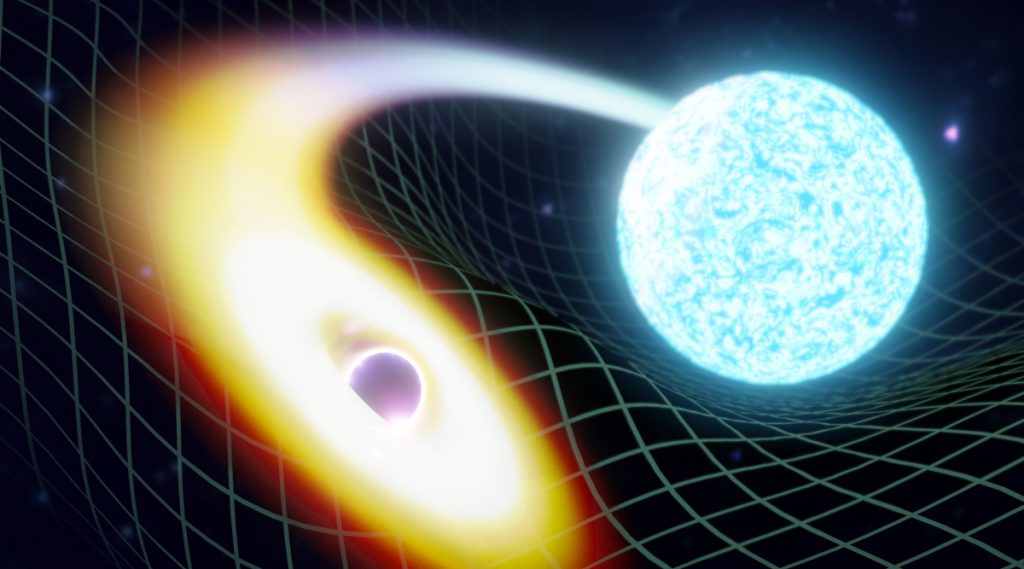Ø For the first time, Gravitational waves from two separate mergers of a Black Hole (BH) with a Neutron Star (NS) have been detected by the LIGO observatories in the US and the Virgo observatory in Italy. Although hints of similar mergers have been spotted by the detectors before, these are the first confirmed events of this kind. One signal was detected on 5 January 2020 and the other was observed less than two weeks later, on 15 January. This ground breaking discovery of gravitational waves from a pair of NS-BH mergers was published in the Astrophysical Journal Letters recently.
Ø Neutron stars merging with black holes are amongst the most extreme phenomena in the Universe. Observing these collisions opens up new avenues to learn about fundamental physics, as well as how stars are born, live, and die. Neutron stars are the densest objects in the Universe, so these findings can also help us understand the behaviour of matter at extreme densities.
Ø Until now, the LIGO-Virgo collaboration (LVC) of gravitational waves detectors has only been able to observe collisions between pairs of black holes or neutron stars. For the
first time, in January 2020, the network of detectors made the discovery of gravitational waves from a pair of Neutron Star-Black Hole mergers.
Ø Gravitational waves are ripples in space–time that are generated when pairs of massive objects such as black holes and neutron stars orbit each other in a rapid inspiral before merging. The LIGO and Virgo observatories are kilometre-scale interferometers that can measure the minuscule expansion and contraction of space–time that occurs when a gravitational wave passes through Earth.


